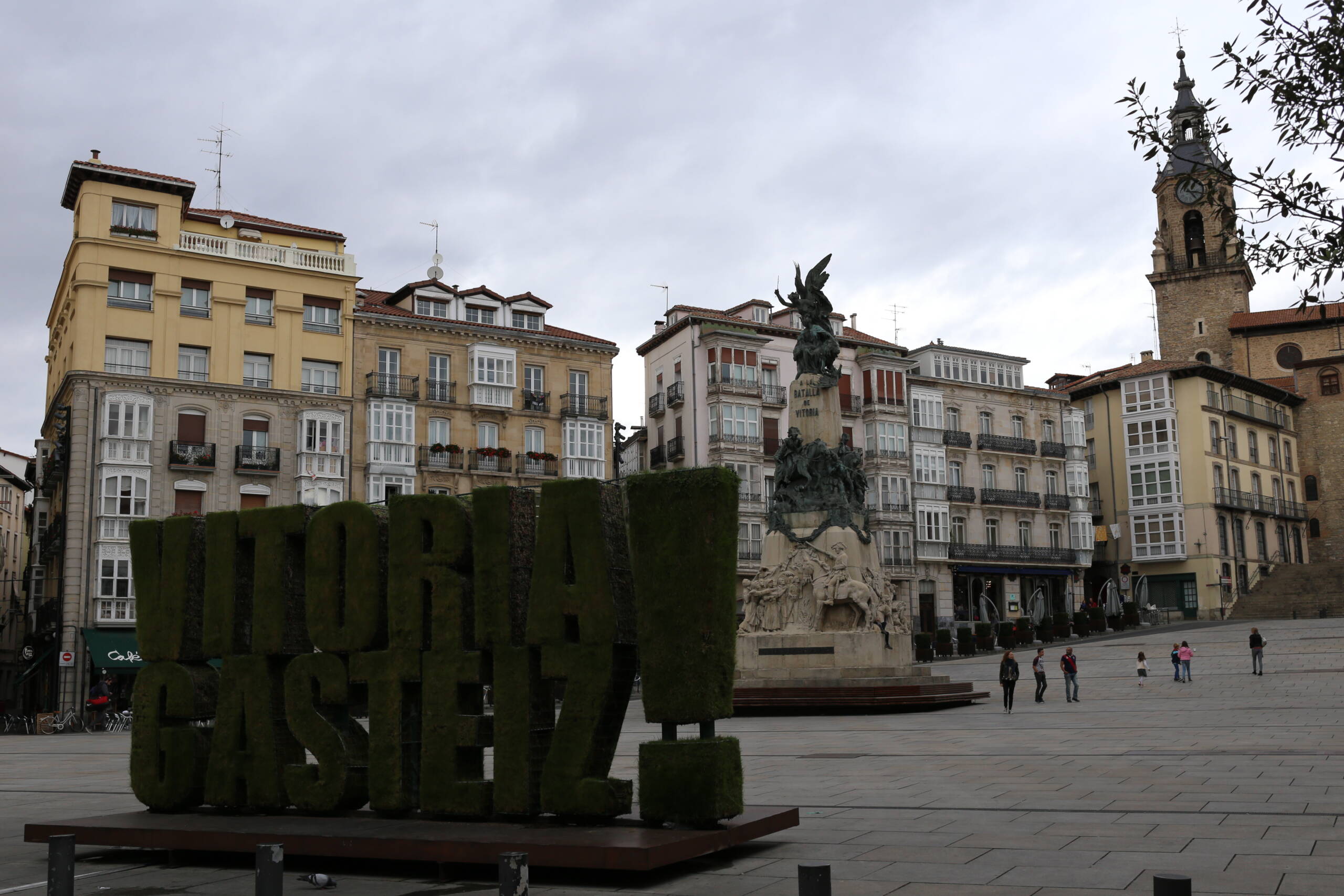Standing in the heart of Vitoria-Gasteiz, you immediately feel how history, culture, and modern life intersect in a way that feels surprisingly balanced. The large green letters covered in living plants spell out the city’s name with an exclamation mark, as if proudly reminding you that this is not just any stop in the Basque Country—it is its capital. The sign sits boldly in the main square, becoming both a playful landmark and a symbol of the city’s commitment to sustainability, which earned Vitoria-Gasteiz the title of “European Green Capital” in 2012.

Behind the greenery rises the Monument to the Battle of Vitoria, a dramatic sculptural piece that commemorates the 1813 clash where Wellington’s troops defeated Napoleon’s forces. The monument is a swirl of bronze and stone—horses, soldiers, cannons—frozen in an almost chaotic moment of victory. At its peak, an angel of triumph looks outward, as though guarding the city’s future while paying respect to its past. Around it, the square opens into a wide pedestrian plaza where children play, families stroll, and life feels unhurried.
The architecture around the square feels distinctly Basque, with narrow, multi-story houses, colorful façades, and enclosed balconies that jut out like glass boxes. Some are pale yellows and creams, others muted reds, all blending into a harmonious patchwork of history. The old stone tower of the church rises on the right side, its clock a reminder that this city has always lived in rhythm with tradition yet never lost sight of time’s forward march.
What makes Vitoria-Gasteiz special isn’t just the monuments or the squares—it’s the atmosphere. Even under a cloudy sky, there’s brightness in how the city presents itself: open, welcoming, rooted in history yet deeply conscious of its environment and people. For a traveler, it’s not only a place to stop but a place to slow down, sit at a café in the plaza, and absorb the life that flows as naturally as the Basque spirit itself.
Leave a Reply